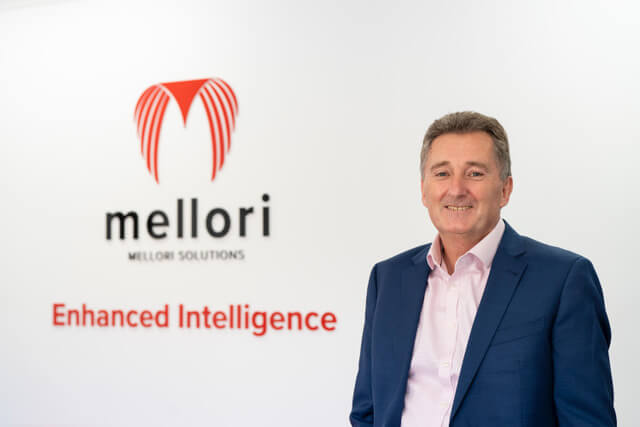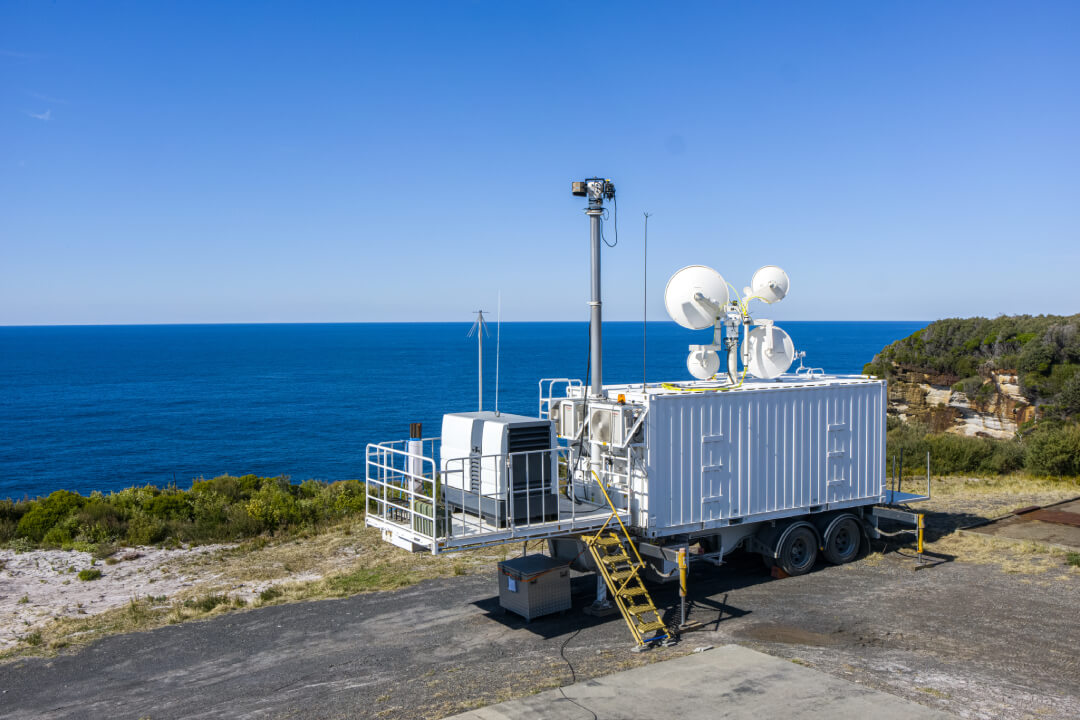Phil Guy – Managing Director, Mellori Solutions (An Alkath Group Company) – Adapting Maritime EW Sensors to the Age of Adversary Software-Defined Radar Technology.
In today’s maritime environment, electromagnetic warfare (EW) is pivotal in maintaining a platform’s protection and safeguarding its interests when operating across the electromagnetic (EM) spectrum. Electronic Support (ES) is the aspect of EW that involves monitoring the EM spectrum. On a maritime platform, like a Hobart class destroyer, Collins class submarine or even a Seahawk helicopter, the primary purpose of an ES sensor is to intercept, analyse and identify EM signals, and provide timely and accurate intelligence to support command team tactical decision-making.
Over the past 50 years, maritime EW has undergone significant transformations. Particularly, the utilisation of low-cost drones and guided weapons has become commonplace in conflicts like the one in Ukraine, which has seen numerous high-value Russian naval vessels damaged or destroyed by low cost readily available and disposable technology. Consequently, the role of EW has become increasingly vital in denying the operational spectrum relied upon by these advanced technologies.
As the world of military technology advances rapidly, maritime platforms with federated EW capabilities must adapt and evolve to effectively address the challenges of constantly changing intelligence landscapes. This becomes even more critical in the adversary software-defined radar technology (SDR) era. Radar parametric agility (the ability of the radar system to rapidly change its operating parameters in response to varying conditions or requirements), performance and function are all achieved through software without any changes to the physical hardware, resulting in a highly configurable, adaptable, and flexible technology.
Historically, EW practitioners have had the advantage over traditional hardware-based EW threats that operate with fixed functionality. Those practitioners relied heavily on static libraries to assist with threat assessment and timely intelligence information to support informed decision-making. However, in the context of radar adversary threats, the EW advantage has swung towards SDR technology, in turn demanding a re-evaluation of how much reliance EW operators can place on static historical databases.
To effectively respond to this shift, two key concepts, “Library Verification” and the evolution of “Static Parameters”, deserve our attention.

Library Verification: Redefining the Historical Data Paradigm
Historical data has long been the cornerstone of EW operations. It provides invaluable insights into adversaries’ tactics, techniques, and procedures. In the early days, libraries were used as a supporting tool for decision-making, with EW operators also considering additional sources of information. Among these sources, the sound of the emitter of interest played a crucial role. Like acoustic signatures, radar signatures also offered vital information for emitter verification, enabling operators to analyse all available data comprehensively and identify false alarms.
One of the persistent challenges EW operators faced, and still face, is the occurrence of false alarms in libraries. These false alarms arise due to static parameters being matched against the current radars intercepted in the EM environment, overlooking the dynamic nature of the situation. In a rapidly changing environment where adversaries can swiftly adapt and alter their tactics, blind trust in historical data can quickly become a vulnerability.
One way to improve the situation of false alarms is for EW operators to implement a more adaptive and real-time approach. Instead of relying solely on historical data, the sensor should continuously monitor and analyse the current EM environment to identify potential threats accurately. Addressing the challenge of false alarms in libraries requires a combination of adaptive algorithms, collaborative information sharing, and technological advancements. By adopting these improvements, maritime EW can evolve to be more effective and resilient in rapidly changing environments.
Static Parameters: The Need for Evolution
To enhance the capabilities of EW systems and improve decision-making for operators, it is crucial to integrate artificial intelligence (AI) and machine learning (ML) across legacy ES sensor equipment. By doing so, conflicting data can be minimised, and real-time situational assessment can be provided to command teams.
Implementing AI-based situational assessment tools should cover the parametric classification, pattern of life, and intent recognition alarms that incorporate advanced data fusion and correlation algorithms. This will enable the ES system to analyse and interpret data from multiple sensors, providing a more comprehensive and accurate understanding of the maritime operational conditions.
Furthermore, the AI algorithms should be continuously updated and trained with real-world data to improve their accuracy and effectiveness. This can be achieved by leveraging machine learning techniques that adapt and learn from new scenarios and evolving threats. Implementing a program of continuous EM surveys to baseline a geographic-specific spectrum can also assist with this task.
The AI capabilities should be designed to be easily upgradeable and compatible with legacy EW sensor equipment to ensure seamless integration and compatibility. This will ensure existing sensors can benefit from AI-enhanced decision-making capabilities.
A user-friendly interface must also be developed to provide operators with intuitive access to the AI-based situation assessment tools. This interface should present the information clearly and concisely, enabling operators to make informed decisions quickly and effectively.
By incorporating these improvements, existing EW systems can harness the full potential of AI and ML, enabling operators to respond more quickly and effectively to maritime operational conditions while minimising conflicting data and delays in decision-making.
EW Operators: The past and the future.
To enhance informed decision-making, maritime EW relies on the expertise and capabilities of the EW operator. In the past, hardware-defined radars were prevalent, but with the advancement of SDR technology, historical data libraries are no longer sufficient. While AI and ML are still developing, the future of EW sensors will likely incorporate RF characterisation assessment tools. However, for the present and near future as navies around the world transition legacy EW equipment to effectively deal with software-defined technology, the experience and confidence of the EW operator remain crucial in effectively utilising ES sensors to provide spectrum awareness for platform protection.
Implementing reliable through-air threat emitter testing, training, and evaluation exercises is paramount in facilitating the mastery of operating within the EM spectrum and fostering confidence among operators. Providing a repeatable and understandable representation of potential threats enables EW operators to learn and adapt their training paradigms effectively.
The Way Forward
As we sail through the stormy waters of the 21st century, maritime EW-capable platforms must remain vigilant, adaptive, and relevant. In the cat-and-mouse world of EW, the only strategy for success is recognising and committing to the primacy of data collection and collation and the adept use of the technology that processes and interprets that data.
To ensure the command team has complete confidence in the EW intelligence being presented, it is essential to continue the EW journey and enhance the following aspects:
- Accuracy: implementing enhanced quality control measures to verify the accuracy of the EW information. This can include multiple layers of verification and cross-referencing with different platform sources to reduce errors and false alarms.
- Timeliness: Establish efficient and streamlined processes for collecting, analysing, and disseminating EW data. This could involve utilising technology at the platform level, including AI and ML, to provide up-to-date information promptly.
- Reliability: Develop strong partnerships and collaborations with trusted sources (e.g., international allies) to obtain reliable and credible EW information. This can help verify and validate the data’s accuracy and authenticity.
- Expertise: Invest in live EW training and development programs to enhance the skills and knowledge of EW operators embarked on maritime EW-capable platforms. This will ensure they have the expertise to interpret and present the EW picture accurately.
- In-depth Analysis: Conduct a thorough and comprehensive analysis of the EW information, considering factors such as the source’s credibility, historical context, and potential biases. This will provide a holistic understanding of the EW information and enable the command team to make time-critical decisions.
- Communication: Build effective communication channels between the embarked EW operators, the command team, and the task group. This can involve regular briefings, feedback mechanisms, and open dialogue to address any uncertainties or questions relating to the EW information.
It will be some time before our Navies receive the next generation of platforms equipped with mature EW systems containing fully integrated AI and ML technology. In the meantime, Navies will be operating in a period of EW technology transition. For this reason, library validation and the evolution of static parameters are not just buzzwords but essential strategies for immediate success. By embracing these concepts and integrating cutting-edge technologies, we can ensure that EW capabilities remain effective and resilient in the face of adversary radar software-defined technology.
In this ever-evolving intelligence landscape, the ability to adapt swiftly is the key to supremacy, ensuring that our aligned Navies stay one step ahead of those who wish to disrupt the peace and stability of our seas.
About Phil Guy
Phil Guy served with distinction for 15 years in the Royal Navy and the Royal Australian Navy. A veteran of conflicts including the Falklands, Iran-Iraq, and first Gulf War. Guy witnessed the profound implications of Electronic Warfare during these conflicts. Addressing a growing need for spectrum awareness in a tech-reliant world, he co-founded Alkath Group’s Mellori Solutions 25 years ago. A seasoned veteran and innovator, Guy is a guiding force in defence technology.
by Phil Guy – Managing Director, Mellori Solutions (An Alkath Group Company)














